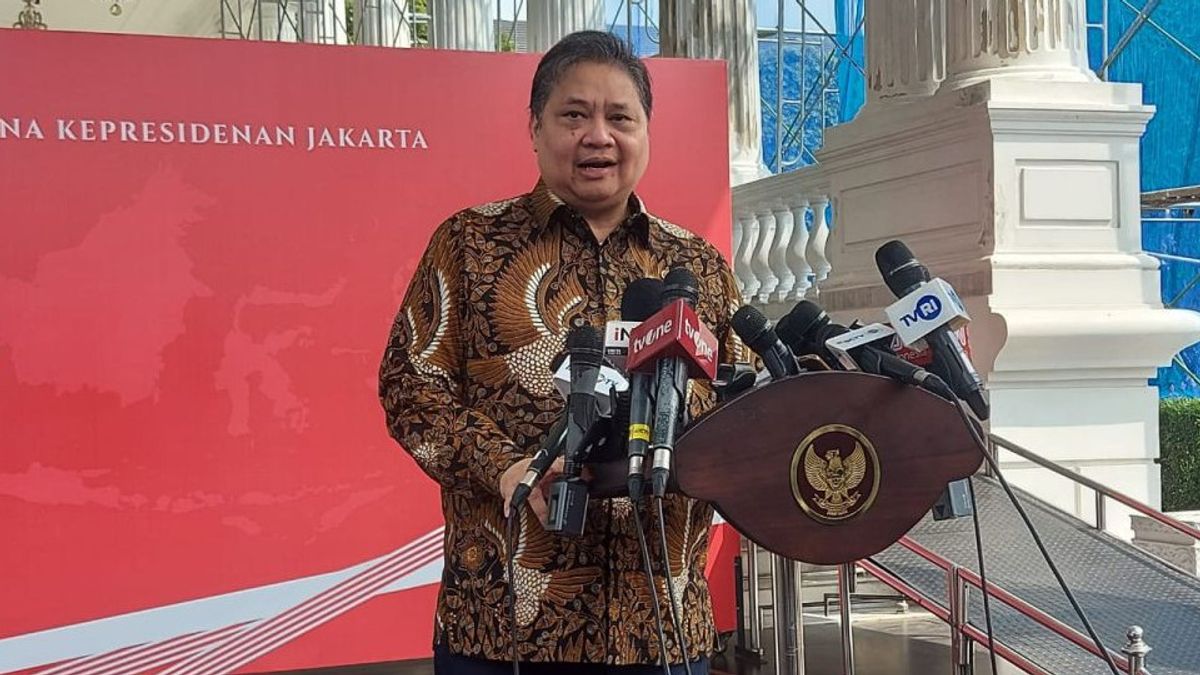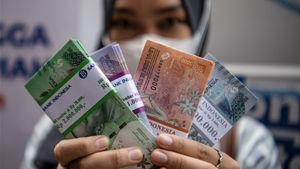Coordinating Minister for Economic Affairs Airlangga Hartarto opened his voice regarding the statement of the World Bank or World Bank which assessed that the free nutritious eating program had no significant effectiveness in overcoming the stunting problem.
Airlangga said the purpose of the free nutritious eating program was to help the growth of the Program for International Student Assessment (PISA) program.
"The purpose of nutritious food is for growth and others, so that the target is PISA, not Piza Margherita," Airlangga told reporters at his office, Friday, June 28.
Launching the Kemendikbud page, PISA is a test system initiated by the Organization for Economic Cooperation and Development (OECD), to evaluate the education system of 72 countries around the world.
Every three years there is an evaluation of the ability of students aged 15 years in reading, mathematics and science.
OECD membership is not only based on economic criteria, but also includes the quality of education, social policy, and good governance. Indonesia's consistently low PISA score over the past 23 years shows great challenges in meeting OECD education standards.
Previously, the government together with the Prabowo - Gibran Synchronization Task Force Team announced a free lunch budget in 2025 of IDR 71 trillion.
The World Bank or World Bank considers the Free Nutrition Food (MBG) program to have no significant effectiveness in overcoming the stunting problem. This was stated in the latest report by the World Bank entitled Indonesia Economic Prospect in the June 2024 edition.
The international financial institution found that school food can have several goals, namely improving health and nutrition, increasing attendance and learning, and social protection.
At the same time, the goal of providing food in schools continues to grow, with increasing emphasis on food quality, the role of food in building resilience and response to shocks, and strengthening relations with local market development.
"With this evolution, greater complexity emerged in design and implementation. The World Bank explains that international evidence shows that food in schools will be the most effective when juxtaposed with other educational, health, and nutritional interventions, as well as basic safety nets," he wrote, quoted Friday, June 28.
The World Bank revealed evidence regarding learning results is less strong compared to traditional pedagogical interventions with higher variances, and stronger for more vulnerable groups such as poor students and girls, for example.
In addition, evidence regarding the return of food provision in schools is uneven in all destinations, and the quality of its application can provide a big difference in the final result.
Meanwhile, in the field of education, there is strong enough evidence regarding the impact of attendance in schools in low- and lower-middle-income countries whose problems are access to education, but the benefits of school food for school participation are likely to be limited in countries that already have high school participation.
"In connection with nutrition, food in schools is not designed to have an impact on stunting, because these foods are not targeted for the first 1,000 days of life. However, food at school may have an impact on the diversity of diets and anemias in children attending school, although this depends on the specific commodities offered., wrote the World Bank.
In general, feeding in schools can be effective if there are concerns about food security. To achieve better nutritional results, more than 80 percent of the national school food program combines food with the provision of school health and nutrition interventions to improve health outcomes and help ensure complementary to stunting interventions aimed at the first 1000 days.
Furthermore, the World Bank sees food in schools as well as indirectly providing benefits for the economic welfare of beneficiary households, the biggest impact occurs in areas with a high poverty rate where spending on food represents a larger share of household income.
From the evidence of countries that have run this program, the World Bank emphasized that food in schools will be the most effective when juxtaposed with other educational, health, and nutritional interventions, as well as basic safety nets.
"Therefore, the implementation or expansion of this program must not sacrifice lower spending or attention to other important human capital interventions. Overall, it is important to define and establish clear goals for these programs. This will ensure that effective implementation and supported interventions are the most cost-effective way to achieve the desired results," wrote the World Bank.
The World Bank assesses that decisions regarding targeting food in schools can have implications for program efficiency and effectiveness.
As for the universal targeting where food is provided for all students at a certain level of education, it often occurs in high-income countries, while in low- and middle-income countries, geographical targeting for areas with high poverty rates or food-prone areas is quite common.
SEE ALSO:
However, targeting income where students receive free food based on assessing their socio-economic conditions is not common outside the context of higher income, due to a combination of capacity constraints (there is a system to support reliable targeting at the school level or individuals in terms of costs.
"As well as concerns about stigma that limits the retrieval or perception of injustice at the school level," he said.
The English, Chinese, Japanese, Arabic, and French versions are automatically generated by the AI. So there may still be inaccuracies in translating, please always see Indonesian as our main language. (system supported by DigitalSiber.id)















